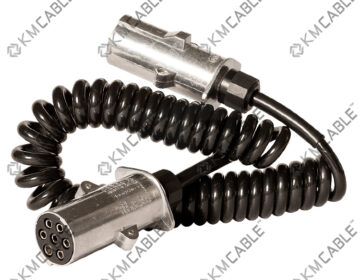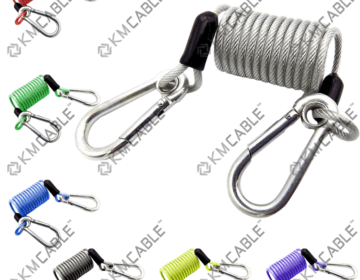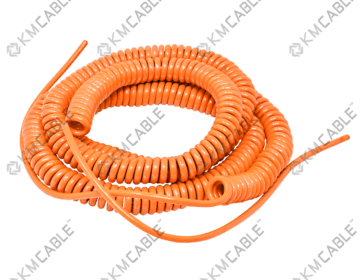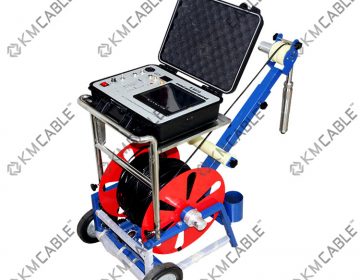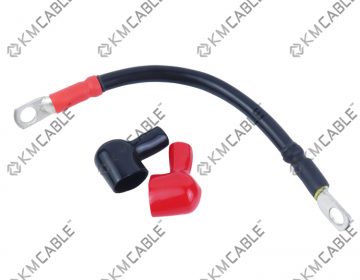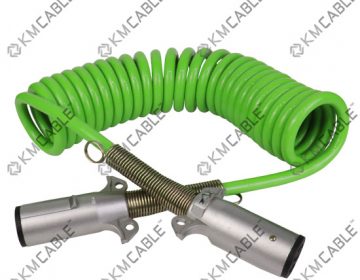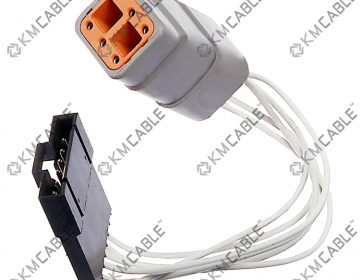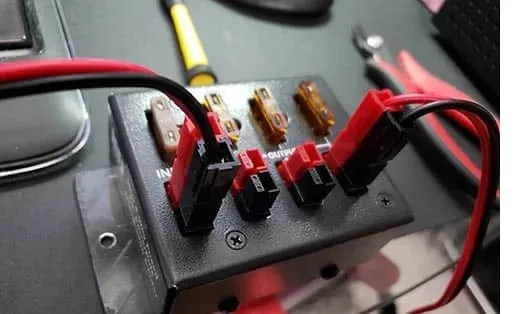
Automotive battery cables play a critical role in vehicle performance, serving as the primary pathway for electrical power transfer between the battery and the vehicle’s electrical components. The right choice of material, connectors, and cable size directly impacts the reliability, safety, and efficiency of the vehicle’s electrical system.
What is a Battery Cable in Automotive?
A battery cable in automotive applications is a heavy-duty electrical cable designed to carry high current from the vehicle’s battery to the starter, alternator, and other electrical components. It consists of a conductive core, typically made of copper or aluminum, and is insulated with materials that offer protection against heat, chemicals, and mechanical wear.
Types of Battery Cables in Automotives
Automotive battery cables can be categorized into several types based on their function:
– Positive Battery Cable: Connects the positive terminal of the battery to the starter or electrical fuse box.
– Negative Battery Cable: Connects the negative terminal to the vehicle’s chassis, serving as a ground.
– Ground Straps: Provide additional grounding to prevent electrical noise and ensure system stability.
– Primary vs. Secondary Cables: Primary cables handle the main current flow, while secondary cables connect auxiliary components.
Importance of Battery Cables in Vehicles
Battery cables are essential for:
– Power Transmission: Enabling the flow of electricity from the battery to critical systems.
– Vehicle Startup: Delivering high current to the starter motor during engine ignition.
– Electrical System Integrity: Maintaining stable and efficient performance of electronic components.
– Safety: Reducing risks of short circuits and electrical failures.
Materials Used in Battery Cables
The performance and durability of battery cables are heavily influenced by the materials used:
Copper Battery Cables
Copper offers high electrical conductivity, flexibility, and durability, making it ideal for high-performance and heavy-duty applications.
Aluminum Battery Cables
Aluminum is lightweight and cost-effective, commonly used in modern vehicles to reduce weight, though it has lower conductivity compared to copper.
Tinned Copper Cables
These cables are coated with a layer of tin, providing corrosion resistance and longevity, especially useful in marine and heavy-duty applications.
Hybrid Cable Materials
Combining materials like copper-clad aluminum provides a balance of performance and cost, suitable for specific applications.
Battery Cable Insulation Materials
Insulation materials are crucial for protecting the cable from environmental hazards:
– PVC: Cost-effective and offers good chemical resistance.
– Cross-linked Polyethylene (XLPE): Heat-resistant and durable.
– Rubber: Provides flexibility and good wear resistance.
– Silicone: Suitable for high-temperature environments.
Battery Cable Connectors in Automotive
Importance of Battery Cable Connectors in Automotive Systems
Battery cable connectors not only establish a connection but also maintain the integrity of the electrical circuit. High-quality connectors:
– Prevent voltage drops.
– Enhance current flow.
– Ensure safety by reducing the risk of sparks or loose connections.
Common Types of Automotive Battery Cable Connectors
Ring Terminals
Ring terminals feature a circular end that allows them to be bolted securely onto battery terminals or ground points. These connectors are commonly used due to their durability and ability to provide a solid connection under vibration and stress. Ring terminals are widely seen in both traditional internal combustion vehicles and electric vehicles.
Quick-Disconnect Connectors
These connectors are designed for situations requiring rapid disconnection of the battery. They are useful in emergency scenarios and during regular maintenance. Quick-disconnect connectors are favored in race cars and some commercial vehicles where safety and speed are priorities.
Battery Lugs and Clamps
Battery lugs and clamps are robust connectors designed for high-current applications. They provide a sturdy and corrosion-resistant connection, often used in heavy-duty trucks and marine applications where reliability is crucial.
Pin Terminals
Pin terminals are compact connectors typically used in smaller automotive systems and accessory connections. They offer ease of installation in confined spaces.
Anderson Power Connectors
These connectors are popular in electric and hybrid vehicles. They allow for high-current connections and are known for their durability and ease of use, particularly in industrial and utility vehicles.
Flag Terminals
Flag terminals are designed with a 90-degree orientation, making them ideal for tight spaces where a traditional straight connection may not fit. These connectors are often used in motorcycle and compact vehicle applications.
## Industry Standards for Battery Cable Connectors
### SAE Standards (Society of Automotive Engineers)
– SAE J1127 & J1128: Standards for low-voltage primary cables.
– SAE J1811: Specifies performance requirements for terminal connectors.
### UL (Underwriters Laboratories) Ratings
– Ensures safety and quality standards are met for electrical components.
– UL 486A-486B: Covers wire connectors and soldering lugs.
### ISO Standards
– ISO 6722: Relates to automotive cables used in road vehicles.
– ISO 14572: Defines the requirements for automotive electrical connectors.
### RoHS Compliance (Restriction of Hazardous Substances)
– Ensures connectors are free from hazardous materials such as lead and mercury, promoting environmental safety.
## Battery Cable Connector Materials
### Copper
Copper connectors are widely used due to their excellent electrical conductivity and resistance to corrosion.
### Brass
Brass connectors offer good conductivity and are more resistant to corrosion compared to copper, often used in marine applications.
### Lead
Lead terminals, especially for battery posts, provide a malleable yet secure connection, commonly found in traditional automotive batteries.
### Stainless Steel
Stainless steel connectors are durable and resistant to harsh environments, suitable for heavy-duty and industrial vehicles.
## Car Types and Their Battery Cable Connector Requirements
### Passenger Vehicles
– Primarily use ring terminals and quick-disconnect connectors for safety and ease of maintenance.
### Commercial Vehicles
– Rely on heavy-duty lugs and clamps to handle higher current loads and ensure reliability.
### Electric and Hybrid Vehicles
– Often utilize Anderson power connectors and specialized quick-disconnect systems to manage high-voltage battery systems safely.
### Heavy-Duty Vehicles
– Use robust lugs, clamps, and brass connectors to withstand harsh conditions and high power demands.
### Marine and Specialty Vehicles
– Require corrosion-resistant materials like stainless steel and brass connectors due to exposure to moisture and salt.
## Best Practices for Selecting Battery Cable Connectors
– Choose connectors with proper load capacity and material compatibility.
– Ensure the connector meets relevant industry standards.
– Select corrosion-resistant materials for longevity.
## How to Install and Maintain Battery Cable Connectors
– Properly crimp or solder connectors to avoid loose connections.
– Regularly inspect for corrosion or wear.
– Clean terminals periodically and apply dielectric grease to prevent oxidation.
## Troubleshooting Common Battery Connector Issues
– Corrosion: Clean with a wire brush and baking soda solution.
– Loose Connections: Re-tighten bolts and ensure secure fitment.
– Voltage Drops: Test with a multimeter and replace faulty connectors if necessary.
Automotive battery cable connectors are a critical component of vehicle electrical systems. Choosing the right type and maintaining them properly can significantly impact vehicle performance and safety. Adhering to industry standards ensures compatibility and reliability across different vehicle types.
## FAQs
### 1. What is the best material for battery cable connectors?
Copper and brass are the most common due to their conductivity and corrosion resistance.
### 2. Can I use quick-disconnect connectors on any vehicle?
Yes, but they are particularly beneficial in emergency scenarios and high-maintenance environments.
### 3. How often should battery connectors be inspected?
Inspect them at least every six months, or more frequently in harsh environments.
### 4. Are there different standards for electric vehicle connectors?
Yes, electric vehicles often require high-current connectors that comply with additional safety standards like UL and ISO.
### 5. What is the difference between ring terminals and lugs?
Ring terminals are generally used for lighter connections, while lugs are designed for high-current applications.
### 6. How do I prevent corrosion on battery cable connectors?
Regular cleaning and applying dielectric grease can prevent corrosion.
Choosing the Right Battery Cable Size
Selecting the proper gauge size depends on the current load, length of the cable, and preventing voltage drops. Thicker cables offer lower resistance and better performance.
How to Properly Install Battery Cables
A step-by-step installation guide includes preparing tools, ensuring clean connections, securing cables, and following safety practices to avoid shorts and damage.
The choice of battery cable materials and connectors significantly influences vehicle safety and performance. Regular maintenance and proper installation practices ensure a reliable electrical system, supporting the overall efficiency of the vehicle.

